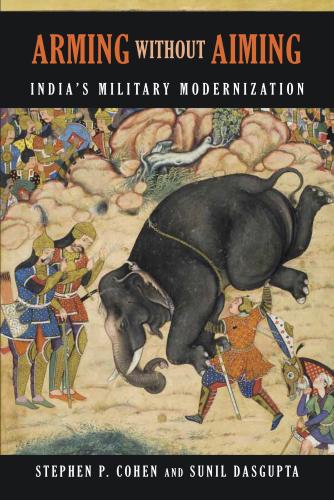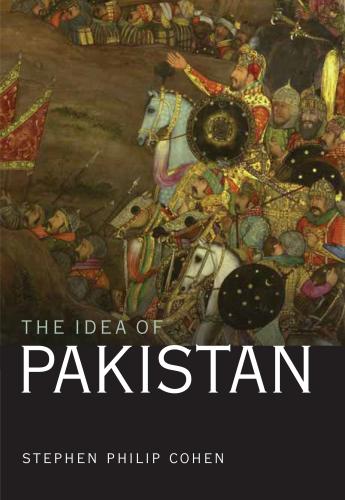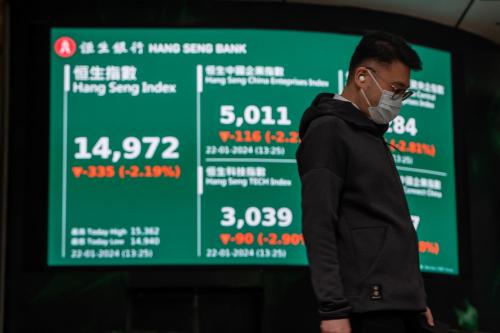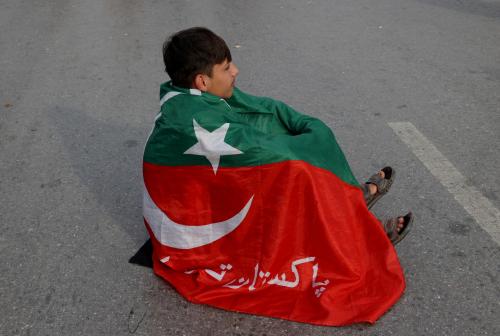Stephen P. Cohen was a valued member of the Brookings family for 21 years, from 1998 until his death following an illness on October 27, 2019. You can learn more about his work here.
There are people who influence you and there is the person who changes your life. For me, that person was Steve Cohen. From the first time I spoke with him on the phone in 1993 about a story I was writing for India Today (where I worked then), to my entry into the graduate program at the University of Illinois at Urbana-Champaign, to him inviting me to write a book with him, Steve shaped my life for a quarter-century. I even met my wife, Elana Mintz, at Brookings after Steve offered me a job there.
None of this is extraordinary; almost everyone who met Steve has a story about his generosities both big and small. From the gift of a book — or five — to the career-defining visiting fellowship at the University of Illinois or Brookings, Steve was known for inviting people to new opportunities. In the process, he built institutions and seeded the sub-field of South Asian security studies in the United States, not only with his own work but with the contributions of his students. His only American contemporary was Raju Thomas at Marquette University. Steve left us a body of work that is astonishing in its breadth, depth, and volume.
Others have written about Steve’s institution-building and generosity, so I want to emphasize his contribution to his original discipline of political science. It is important to highlight this contribution because Steve was himself disappointed at the ahistorical turn political science had taken starting around the late 1980s. The push in political science toward quantitative analysis was part of the reason Steve left the political science department at the University of Illinois to come to Brookings to launch the India Project in 1998.
Steve’s early books on the Indian and Pakistani armies are widely viewed as his most influential contributions, but it is worth noting their theoretical impact. When Steve published “The Indian Army: Its Contribution to the Development of a Nation” in 1971, there were, at the time, two dominant ways in which political scientists thought about third-world armies. Samuel Huntington held one side of the debate — he argued that the professional military in the developing world was the one institution that was able to preserve political order in the face of mounting and chaos-producing popular demands. At the other end of the debate, Samuel Finer and Alfred Stepan argued that military professionalism was leading to coups, militarism, and fascism.
Steve’s representation of the Indian army provided a third model that saw professional militaries as having a nation-building role that did not include grabbing power.
The significance of this thinking became more evident when many new democracies recast their view in line with Steve’s argument, to focus on making the officer corps representative of the population and to see clearly the tradeoffs between operational freedoms and political subservience. The U.S. Department of Defense’s International Military Exchange and Training (IMET) program curricula on civil-military relations generally invoked Huntington to make this point, but Steve’s book showed how this was done in one major developing-world army. Steve’s thesis was closer to that of military sociologist Morris Janowitz, who saw convergence between the army and the nation, where Huntington had highlighted the difference between “Main Street” and “West Point.” Today, there are many countries, from Indonesia to Brazil, that avow this third model. Most interestingly, the Pakistani army seems to have internalized these lessons, even though it has not followed them.
As is well-known, Steve was denied a research visa to India through the 1970s, but General Zia-ul Haq of Pakistan had read his “Indian Army” book and invited him to write a similar analysis of his organization. Steve’s “The Pakistan Army” book was the first in-depth analysis of Pakistan’s army as an institution, and the stresses he identified in the book remain in place to this day. He was among the first to talk about Islamization of that army as a factor in its behavior. This raised the obvious larger question about the compatibility of religion with modern military organization. Elsewhere in the Islamic world — including in Turkey, Algeria, and Egypt — the character of the military has been at the center of the religion-secularist debate. Zia banned the book after its publication.
Steve’s move to Brookings in 1998 was prescient. India had just tested nuclear weapons. The Kargil War followed in 1999, and by the time the September 11 attacks occurred, South Asia and South Asian expertise was at the center of American foreign policy. After almost two decades of decline in regional studies, the return of policy attention to South Asia brought resources and renewed focus on the importance of regional studies.
Steve’s next two books, “India: Emerging Power” and “The Idea of Pakistan,” have been classified as policy works, but their theoretical contributions are significant as well. The India book was an examination of the relationship between economic, political, and military power, and the domestic processes that enable societies to translate economic might into political and military power. The role of domestic institutions in the making of foreign policy and military power remains an enduring puzzle in political science. In India’s case, the country appears to have reversed the causal direction of the economic and military power relationship such that its demonstration of military power — in the form of nuclear tests — ignited greater economic growth. But it came at the cost of political-military instability.
Steve contributed to the study of what is known in international relations as the stability-instability paradox by examining India-Pakistan crises from 1984 to 2002. This research was a collaboration with Indian scholar P.R. Chari and Pakistani scholar Pervaiz Iqbal Cheema.
Many others have written on the stability-instability paradox in South Asia, but what made Chari, Cheema, and Cohen important is their understanding of how the crises contributed to shaping the peace process, which was repeatedly restarted. It was also an examination of how American diplomacy shaped the South Asian conflict and carried important lessons about the limits of American power. In 2013, Steve wrote “Shooting for a Century: The India-Pakistan Conundrum,” which analogized the India-Pakistan conflict to a hundred-year war, coming to the conclusion that the peace process between the two countries had essentially stagnated.
It has now been 13 years since another student of Steve’s, Swarna Rajagopalan, had the foresight to corral his students to produce a book in his honor, “Security and South Asia: Ideas, Institutions and Initiatives.” I wrote an extended essay on the Indian army and its struggle to change. Steve joked that he wasn’t ready to retire, and asked me to join a book project on India’s military modernization. In 2010, Brookings published “Arming Without Aiming,” in which we identified India’s strategic restraint — a concept hitherto applied mainly to the United States — as a determinant of the country’s efforts to generate military power. Whether this restraint remains in place now is a central question about Prime Minister Narendra Modi’s new India, and it remains relevant to the general theory of power transitions and war-making.
I was Steve’s last graduate student at Illinois, and perhaps because of it, I stayed on longer than all the others. I remained in the Washington, D.C. region and our lives intertwined from the mundane to the life-changing. He was at my wedding and he was part of my children’s lives from their births. He came to bagel brunches but passed on the smoked salmon — Steve hated fish — and after each visit, Steve’s wife, Bobby, would write us incredible handwritten notes that picked one conversation to highlight, or offered the encouragement we needed as new parents.
As he became ill over the last few years, I was fortunate to be close and able to visit, and inevitably he called if a South Asian visitor we knew in common was passing through. The last time I saw him was in September, in Raleigh, North Carolina, where Steve and Bobby had recently moved. He was clear enough in mind and spirit to wear his lopsided grin as if asking what all the fuss was about. I read him letters from common friends. I gave him an update on the Indian government’s abrogation of Article 370 in Kashmir. I could see his brain engaging as it used to. He had already predicted a century of conflict between India and Pakistan and, if war prediction is a central purpose of international relations theory, Steve Cohen had one part of the world right.







Commentary
Stephen P. Cohen’s disciplinary contribution to political science
November 4, 2019